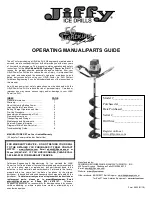
3.7. Wind speeds
Wind speed averaged over 10 minutes at a height of 10 m
Wind
Force
Above flat ground
Characteristics
m/s
Wind type
0
0.0 - 0.2
Calm
Calm, smoke rises vertically or nearly
vertically
1
2
0.3 - 1.5
1.6 - 3.3
Slight breeze
Wind direction recognisable from smoke
plumes, the wind begins to be noticeable on
the face; leaves begin to rustle and weather
vanes can start to move.
3
4
3.4 - 5.4
5.5 - 7.9
Moderate wind
Leaves and twigs in continuous movement,
small branches begin to move. Dust and
paper begin to move over the ground.
5
8.0 - 10.7
Fairly strong
wind
Small leaved branches make swaying
movements; crested waves form on lakes
and canals.
6
10.8 - 13.8
Strong wind
Large branches move; you can hear the
wind whistling in telephone wires; umbrellas
can only be held with difficulty.
7
13.9 - 17.1
Severe wind
Entire trees move; the wind causes difficulty
when you walk into it.
8
17.2 - 20.7
Stormy wind
Twigs break off, walking is difficult.
9
20.8 - 24.4
Storm
Causes superficial damage to buildings
(chimney pots, roof-tiles, and TV antennae
are blown off).
10
24.5 - 28.4
Severe storm
Uprooted trees; considerable damage to
buildings etc. (occurs infrequently on land).
11
28.5 - 32.6
Very severe
storm
Causes extensive damage (occurs very infre
quently on land).
12
> 32.6
Hurricane
3.8. Signals when using a crane
DANGER
• If it is not possible to see the load and the entire working area clearly the crane
operator is obliged to follow the instructions and signals given by a qualified
person qualified.
• The country-specific regulations for crane operator signals are to be used.
Signals in this manual give a number of standard signals that can be used.
Safety precautions and warnings
20
Jonsered 1250RZ -1500RZ R CE
















































